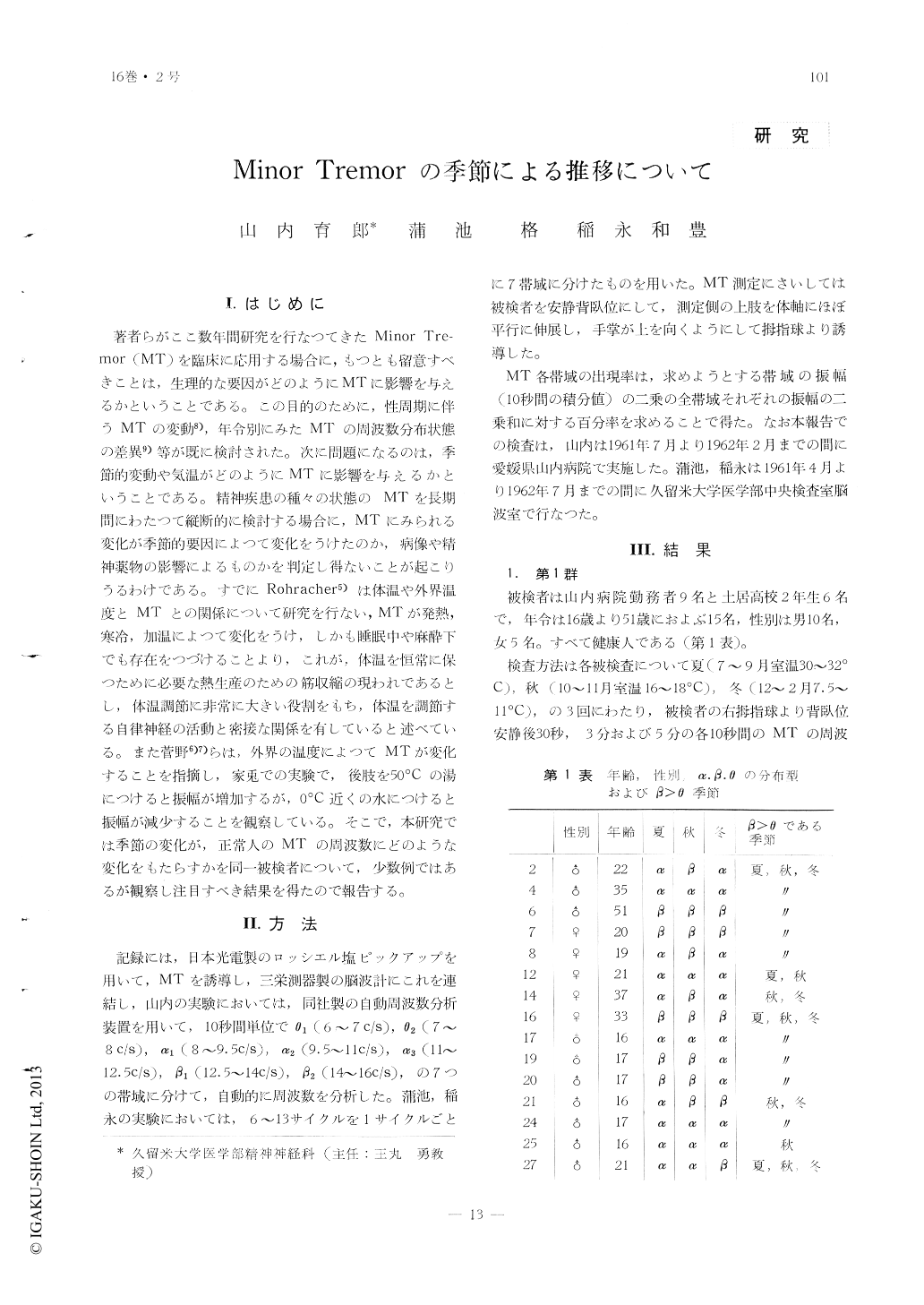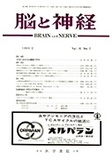Japanese
English
- 有料閲覧
- Abstract 文献概要
- 1ページ目 Look Inside
I.はじめに
著者らがここ数年間研究を行なつてきたMinor Tre—mor (MT)を臨床に応用する場合に,もつとも留意すべきことは,生理的な要因がどのようにMTに影響を与えるかということである。この目的のために,性周期に伴うMTの変動8),年令別にみたMTの周波数分布状態の差異9)等が既に検討された。次に問題になるのは,季節的変動や気温がどのようにMTに影響を与えるかということである。精神疾患の種々の状態のMTを長期間にわたつて縦断的に検討する場合に,MTにみられる変化が季節的要因によつて変化をうけたのか,病像や精神薬物の影響によるものかを判定し得ないことが起こりうるわけである。すでにRohracher5)は体温や外界温度とMTとの関係について研究を行ない,MTが発熱,寒冷,加温によつて変化をうけ,しかも睡眠中や麻酔下でも存在をつづけることより,これが,体温を恒常に保つために必要な熱生産のための筋収縮の現われであるとし,体温調節に非常に大きい役割をもち,体温を調節する自律神経の活動と密接な関係を有していると述べている。また菅野6)7)らは,外界の温度によつてMTが変化することを指摘し,家兎での実験で,後肢を50℃の湯につけると振幅が増加するが,0℃近くの水につけると振幅が減少することを観察している。そこで,本研究では季節の変化が,正常人のMTの周波数にどのような変化をもたらすかを同一被検者について,少数例ではあるが観察し注目すべき結果を得たので報告する。
Minor tremor (MT) of 19 normal subjects were observed each season for the purpose of investigating the seasonal variation, MT was recorded from the thenar.
1) Frequency anlyses of MTs in 15 normal subjects in Summer (30-32℃), Autumn (16-18℃) and Winter (7.5-11℃) showed that the ratio of theta band increased in summer, that of beta increased in autumn and that of alpha band increased in winter.
2) Frequency analyses of MTs in 4 normal female subjects obtained in air-conditioned room showed that frequency graph with much slow activity was seen from April to May, with much fast activity was seen from Nov-ember to February and from June to July it was slightly faster than that on April and May.
3) From above observations it was conclu-ded that the frequency of MT was seasonally variable, probably due to the seasonal varia-tions of autonomic nervous system.

Copyright © 1964, Igaku-Shoin Ltd. All rights reserved.


